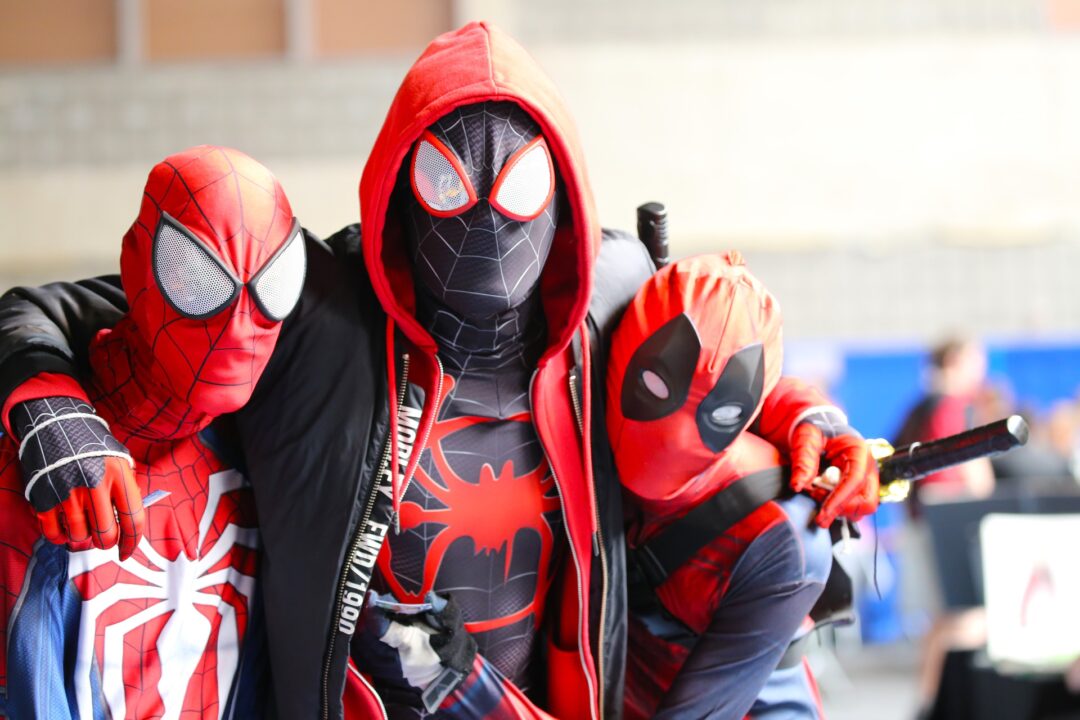As I’ve written before and certainly will again, costumes are incredibly important to how a character moves.
In looking at costumes, there’s a lot of factors to take into account here, right?
A period piece may include a corset or stockings, towering wigs, or imposing hats.
A character existing in the modern world may wear a short dress or sweat pants.
Speaking from personal experience, moving is a lot easier in sweat pants vs. a corset.
What we choose to wear (or what our characters wear) comes in many non-physical forms, too, such as self-expression or repression, societal norms and expectations, religious importance, and vocation.
So, yeah, costumes are pretty important. (And this is not just me speaking as a former costume designer, promise 🙂 )
Now, let’s talk about shoes.
Your character’s shoes
What shoes your character wears says a great deal about them and where they fit within the society they inhabit.
Do they conform to their societal norms or rebel? Or are they stuck somewhere in between?
Do they wear shoes they’re supposed to while at work but then change immediately once they have the chance?
Diving into character movement work, this kind of thinking can be applied to your character’s movement signature.
A character who is used to wearing power heels and has a direct and sustained way of moving may be thrown off by wearing sandals for the first time in another scene.
Moving in shoes
I’m reminded of someone I used to work within a classic office setting.
She wore heels every day for decades to the point where she told me it hurt to wear flats.
It was challenging for her to walk while wearing flats because her Achilles tendons had shrunk due to her consistent use of high heels.
Something like this is gold for a character movement signature.
Another example I love that displays how a change in shoes can highlight a character’s movement transformation is from Kerry Hishon’s blog post Why You Need to Rehearse in Your Character’s Shoes from Theatrefolk:
“For example, think about a show like My Fair Lady. Eliza starts as a humble flower seller wearing thick boots and is made over into a society lady in fancy high heels. How would that affect both the actress playing the role and the character herself? How does she walk in her everyday boots versus her new, stiff, heeled shoes? At what point does she become more comfortable in her new shoes? How can you, as an actor, accurately show this evolution of movement?”
Moving without shoes
You may find yourself playing a character that doesn’t wear shoes for whatever reason.
When I was in college, I was a part of a wonderful one-act called The Goblins Plot to Murder God by Mark O’Donnell. (Not an affiliate link, FYI)
It’s a 10-minute play about, well, a goblin’s plot to murder God.
Think Shakespeare meets Dr. Seus.
The opening lines spoken by the narrator are:
“Bleak and squeaking, weakly seeking,
To the clumsy drum they come.
Hobbling, wriggling, straggling gaggle –
Niggling goblins! Here are some!
Gabbling rabble, thrum and thrum!
This, their cheerless leader Ooze.
Let us hide and bide what brews.”
For our production, as goblins, none of us on stage wore shoes. It was a wonderful experience, incredibly freeing, and I found it ultimately a lot easier to drop my center of gravity and slip into the role.
Shoes are an extension of us
Our feet are our connection to the ground and our relationship with it. Therefore what we put on our feet acts as an extension of our feet.
It’s like a swordsman seeing their sword as an extension of their hand. Likewise, shoes may not be a weapon unless you’re in a spy film, but shoes are how we make contact with the land beneath us.
Gayle Rankin was quoted in an article by Christopher Byrne on the pivotal role of shoes on Broadway, “…Shoes change how you walk and how you act how balanced you are.”
Tying shoes into psychology
The shoes our character wears display a great partnership between character movement and psychology.
What sound do the shoes make when they make contact with the ground? Are they harsh clicks or soft shuffles? Quiet and unassuming or brash and demanding of attention?
Now adding the psychological character work you’ve done-how does this amplify or contradict their personality?
Get those characther’s shoes on!
When I’m diving into a new role, regardless of how intensive I know the movement work will be, I like to check in with the costume designer as soon as I can.
In my experience both as an actor and costume designer, collaboration has been vital.
There’s a balance between the overall visual aesthetic of the production (time period, etc.) and my comfortability as an actor (if I need to practice ascending that spiral staircase in 3in stilettos) as well as what would be in the characters taste.
Now, if you’re the one who’s responsible for your costume, what shoes you’re going to wear is an important element to research and experiment with early on.
So, are your character’s shoes really that important? Yes, yes, they are.
Not only are they a key factor to building your character’s movement signature, but they’re also a wonderful way to weave together your character’s multifaceted journey.




